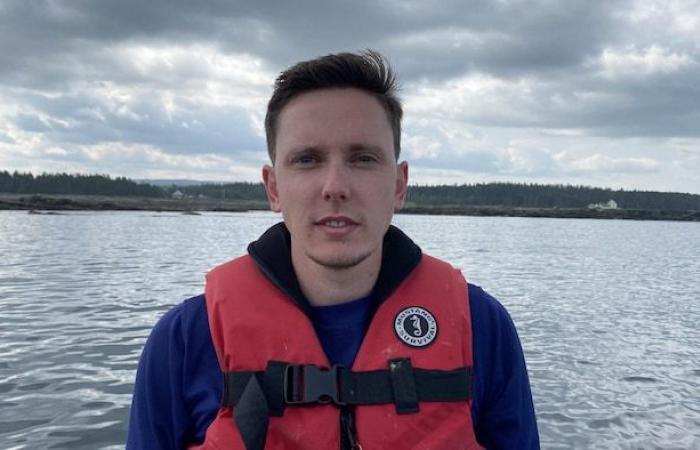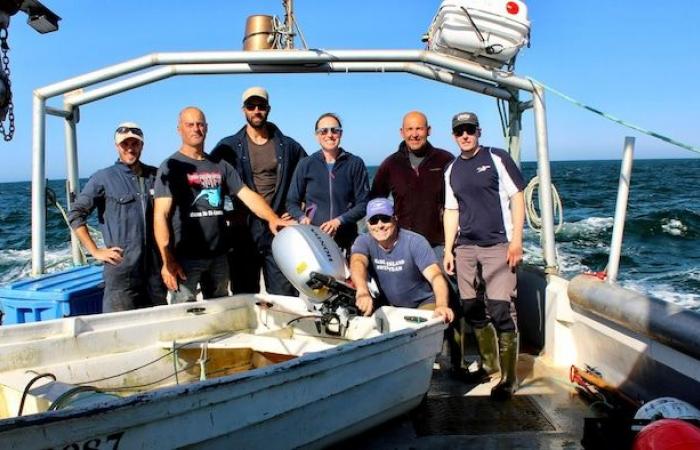For a second year, Fisheries and Oceans Canada researchers placed transmitters on the backs of 15 great white sharks in the waters of the Gulf of St. Lawrence, near the Magdalen Islands.
We see its presence increasing in the waters of the Gulf, it arrives earlier and stays longer. […] There’s a lot we don’t know about the white shark, surprisingly
indicates the scientific researcher at the Maurice-Lamontagne Institute, Xavier Bordeleau, on the show Hello Coast.
He explains that the probes will provide information on the presence of great white sharks at different times of the year. They will allow us to assess how things can change over time.
he adds.
Installing the probe is possible by baiting the sharks so that they approach the boat on their own. The scientists, using poles of more than three meters, manage to insert the transmitter about ten centimeters under their skin, into the back muscles.
The team of scientists is working to better understand the role of the species in the ecosystem and to define its critical habitat, given that it has endangered species status under the Species Act. in danger.
Last year, a team from the Maurice-Lamontagne Institute, supported by scientists from the Maritimes, succeeded in placing satellite and acoustic devices on the backs of nine white sharks off the coast of the Magdalen Islands.
Open in full screen mode
Xavier Bordeleau was first interested in gray seals, but it is their predator, the white shark, which now occupies part of his research. (Archive photo)
Photo: - / Shanelle Guérin
Starting in 2021, Fisheries and Oceans Canada began installing hydrophones in the Gulf of St. Lawrence to detect the presence of these sharks, particularly near gray seal haulouts.
In 2023, Canadian and American research efforts made it possible to count 69 white sharks equipped with transmitters having frequented the waters of the Gulf of St. Lawrence.
It is difficult to know what proportion of tagged sharks are out of the total population. But we know that there are 139 active transmitters, so 50% of the marked animals have entered St. Lawrence waters. This is our highest value
explains Xavier Bordeleau.
It is still too early to know the number of great white sharks that have navigated the Gulf of St. Lawrence in 2024.
Open in full screen mode
Scientists from Quebec and the Maritimes took part in the shark tagging operation last year. From left to right, Samuel Mongrain (MPO-Québec), Ghislain Cyr (Madelinot fisherman), Hassen Allegue (MPO-Québec), Heather Bowlby (MPO-Maritimes), Warren Joyce (MPO-Maritimes), Rodrigue Dubé (Madelinot fisherman) and Xavier Bordeleau (MPO-Quebec).
Photo: Fisheries and Oceans Canada research groups on seals and sharks in Quebec and the Maritimes
Mr. Bordeleau is also used to working on gray seals, his main research subject. His research leads him to collaborate with hunters and fishermen from the Magdalen Islands.
The two species are linked, since through its presence, the white shark can affect the behavior of seals. The data will help uncover how the risk of interactions varies across the season and how often they occur. They will also document the places where these interactions occur
he says.







